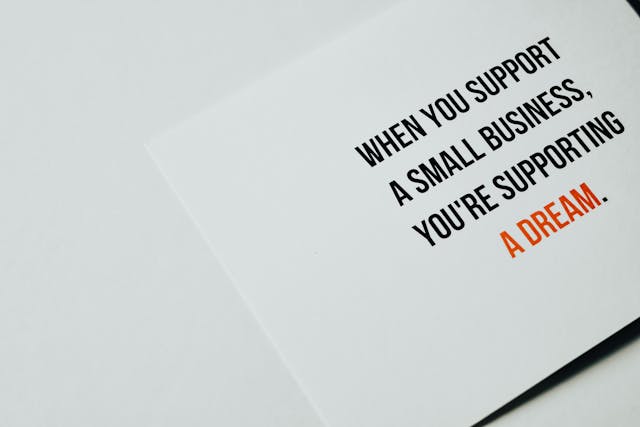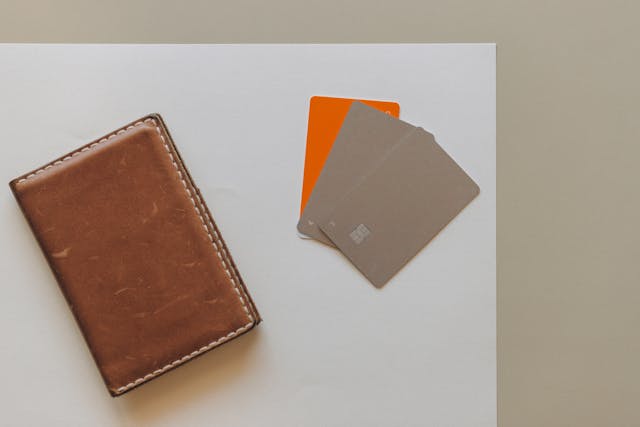In today’s digital age, you might wonder if business cards still matter. In property management, the answer is a resounding yes. Business cards are a quick, tangible way to make a memorable first impression on potential clients, tenants, and vendors. But not all business cards are created equal. A poorly designed or forgettable card gets tossed aside, while a thoughtfully crafted one can set you apart from the competition. Here’s how to create property management business cards that not only stand out but also work as a marketing tool to grow your business.
1. Start with a Clear, Professional Design
A business card is an extension of your brand, so it needs to look professional and polished. Your design should be clean, uncluttered, and easy to read. Avoid cramming too much information onto the card, as this can make it look messy and overwhelming. Stick to the essentials, with plenty of white space for a clean look.
Use fonts that are legible and professional—nothing too fancy or hard to read. Limit yourself to one or two fonts to keep things simple. Serif fonts convey trustworthiness and formality, while sans-serif fonts have a more modern, approachable feel. Choose the one that best fits your property management brand.
If you manage luxury properties, the card design should reflect elegance and sophistication. For commercial or residential property managers, a modern, sleek design might be more appropriate. Whatever style you choose, make sure it aligns with your brand image.
2. Include a Strong, Recognizable Logo
Your logo is a visual representation of your company, and it should be prominent on your business card. A well-designed logo adds credibility and reinforces your brand identity. If you don’t have a logo yet, investing in one is worth considering, as it helps with long-term brand recognition.

Place your logo near the top or in one of the corners of the card to grab attention without overpowering the rest of the information. Make sure it’s high-resolution and looks sharp on the card, whether printed in color or black and white.
3. Make Your Contact Information Easy to Access
The whole point of a business card is to make it easy for people to reach you, so your contact information should be front and center. At a minimum, you should include:
- Your full name
- Your title (e.g., Property Manager, Leasing Agent)
- Phone number (preferably your direct line)
- Email address (use a professional one, ideally linked to your company domain)
- Website URL (so clients can learn more about your services)
If you use social media for your property management business, you can also include handles for platforms like LinkedIn or Instagram, but be selective. Only include platforms where you actively engage with clients and tenants. Too many social media handles can clutter the card.
4. Consider Adding a QR Code
A QR code can make your business card interactive and tech-friendly. QR codes can link to your website, a virtual tour of your properties, or your contact information. This feature is especially useful for prospective tenants or owners who want to learn more about your services immediately.
The key is not to overdo it—QR codes should complement the design, not overwhelm it. Place the QR code in a corner or on the back of the card to keep the front clean.
5. Use High-Quality Materials
Business cards aren’t just about how they look—they’re about how they feel. A flimsy card won’t leave the best impression. Invest in high-quality cardstock that feels substantial in hand. Heavier paper, typically between 300-400 gsm, signals professionalism and attention to detail.
Consider adding finishes like matte, gloss, or soft-touch coating to make your cards stand out even more. A matte finish offers a modern, sleek look, while a glossy finish can make your colors pop. Soft-touch finishes give the card a velvety feel that makes people want to hold onto it.
Raised lettering or embossed details can also add a tactile element, making the card more memorable. When someone physically engages with your card, they’re more likely to remember you.
6. Use Color Strategically
Color can make a huge impact on how your business card is perceived. Stick to your brand’s color scheme to keep things consistent. If your logo uses blues and grays, carry that color theme throughout the rest of the card. Bright, bold colors might stand out, but they can also feel unprofessional if not balanced with neutrals.
You can use color to highlight key information, like your phone number or website, by using a different shade or background color. Just make sure the text is still easy to read against the background.
7. Maximize the Back of the Card
The back of the card is valuable real estate—don’t let it go to waste. Instead of leaving it blank, consider adding information that adds value to the person holding it. Some ideas include:
- Your services: A brief list of the services you offer, like leasing, maintenance, or tenant screening.
- A property photo: Showcase one of your best properties to give a visual reminder of what you manage.
- A tagline or quote: A short tagline that summarizes what sets you apart can leave a lasting impression, such as “Your trusted partner in property management” or “Maximizing rental value, minimizing hassle.”
If you want to keep things simple, you can place a large version of your logo or a subtle pattern that ties into your brand. Just avoid cluttering it with too much information. The back of the card should add value, not overwhelm.
8. Highlight What Makes You Unique
Why should someone choose your property management services over another? If you have a unique selling proposition (USP), make sure your card reflects it. This could be a tagline that highlights your specialized expertise, years of experience, or your commitment to customer service.

For example, if you manage luxury properties, the card should evoke that premium feel with sleek design elements. If you focus on eco-friendly properties, perhaps use a recycled paper stock to align with your branding. Your card should tell people, without saying a word, what sets you apart.
9. Ensure Consistency Across All Marketing Materials
Your business card should align with your other marketing materials, from your website to your social media profiles. Consistency in fonts, colors, and design elements helps build your brand identity. When someone sees your card and visits your website, they should feel like they’re part of the same experience.
If you hand out a card that looks nothing like the rest of your marketing materials, it could confuse or create a sense of disconnect with potential clients. Consistency breeds trust, and trust is critical in property management.
10. Keep It Simple, But Memorable
While it might be tempting to pack your business card with tons of information, the best cards are simple and to the point. Stick to the essentials and let the design speak for itself. Avoid using too many different colors, fonts, or graphics. Instead, focus on one or two design elements that make the card pop without overwhelming the reader.
A simple design with high-quality materials and a clear message will stand out far more than a busy, cluttered card.
In property management, your business card is often the first impression someone has of you. A well-designed, professional card is more than just contact information—it’s a marketing tool that represents your brand, builds trust, and leaves a lasting impression. By investing in high-quality materials, a strong design, and a clear message, you’ll create a business card that not only stands out but also helps you grow your business.
